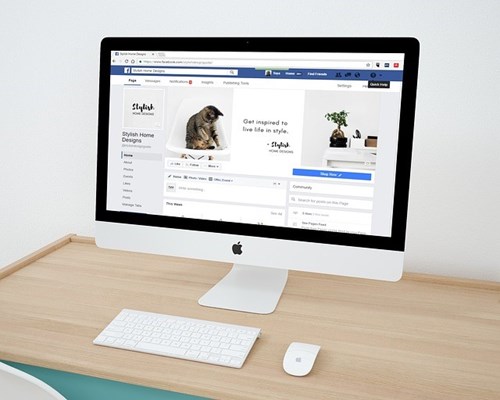A successful brand comes down to much more than just your logo, yet so many new businesses make the mistake of overlooking the finer details. Tone of voice, the people behind the scenes, visuals, colour, font and customer experience are all key to how your brand is perceived.
Essentially, everything you do in the public eye contributes to how your target market sees you as a company. To help you show your brand in the right light, we broke down branding into five key subjects to consider:
• Tone
• People
• Visuals
• Colour & font
• Product & service experience
But before we get into it, let’s make sure we’re all on the same page with a quick definition…
What is a Brand?
A brand is the perception of your business, and how your business is identified. This covers a wide range of brand features from your business’s name, logo, slogan and even the way you talk to your customers. Your brand is usually what differentiates your business from your competitors. For example, a coffee shop might use branding to make customers identify them as the independent, family-run business with a passion for coffee, as opposed to a big coffee chain which would probably be better known for its speed of service and lower prices.
Ready to build your one-of-a-kind brand? Let’s crack on!
Tone
The tone of voice you use when writing content gives a strong impression to the customer of your brand’s personality and values. This is especially important for online only companies as customers will learn everything about you from your written content – both on your website and on social media platforms.
Decide what sort of personality you want to put across to your customers and look at your competitors to see how they communicate. It is useful to look at your competitor’s sites to see what people are responding to, but remember to develop your own personality and tone to ensure you stand out from the crowd.
Chloe Smith, founder and creative director of Forty8Creates, spoke to us about how she defines branding;
“To describe branding, many would agree that a good definition is what people say about you when you aren't in the room. Imagine your brand is a person, and then start to define attributes such as personality, tone of voice and values - over time this is what builds a brand. Think of all the points of contact that someone has with your brand - online and offline - communication needs to be consistent no matter who is writing.”
Well written content that is cohesive with your brand’s values sets you apart from your competition and can help to build trust with your target market.
People
Both the people you employ and the people you sell to are paramount to how your brand is perceived. If you own a shop and the sales assistant you employ has a negative attitude, it will undoubtedly affect the way customers who meet them will view your brand. Likewise, if your staff are enthusiastic about your products and always willing to help, your customers are likely to be happy with their experience and trust you as a company.
“Your brand encompasses everything that represents your company, from the way you talk about your products and services to the way you treat your customers.”
Jenay Sellers, Director of Marketing at Brand Folder
Think of the high-street retailer LUSH – if you have ever visited one of LUSH’s stores you will recognise the importance of their staff’s lively attitude and interactive way of showing off their products. Each member of staff is armed with a wealth of knowledge about their products, truthful opinions on what works for them, and a contagiously up-beat attitude – all values that massively contribute to LUSH’s brand identity.
Visuals
Visuals involve so much more than just your company’s logo. A brand’s visuals are everything the customer sees - the design of your website, the business cards you hand out, the menus on your tables, the posters in your window, even down to the paint on your front door. The visuals you use in your branding gives you the opportunity to stand out from your competitors and show off your company’s unique personality.
It is vital to consider what you want your visuals to say about the company as this is generally what your customers will use to form their first impression. Ensure that your visuals are consistent across all your print, channels and social media platforms to make your brand instantly recognisable to a customer. This consistency will also make your brand seem more reliable to the customer, thus creating feelings of trust.
Colour & font
As discussed in our previous blog posts, How to Create a Winning Colour Palette and The Importance of Colour in Branding, colour can say a huge amount about a brand - possibly without your customer even realising it. A logical mind will know that just because a brand’s logo is red does not mean that they are dangerous. However, using a large amount of red in your branding can create subconscious feelings of urgency – perhaps not the best choice if you are advertising relaxing spa treatments.
Font is an incredibly useful tool that is so often overlooked. Typography is deemed to be an artform in its own right, and understandably so when you consider the effect it can have on the viewer. A customer can make judgements about a company from the font they use just as quickly as they can from the colours. Therefore, it is important to consider this aspect carefully.
There are so many options out there that it can feel overwhelming trying to choose a font to fit your brand. However, if in doubt, it is always best to keep your font clean and simple as overly ornate or detailed fonts can take over your branding and look messy.
Product & service experience
Possibly the most important part of your branding is the customer’s experience with your product or service. You can have fantastic visuals and the perfect tone of voice to describe your company, but if your product lets you down you are unlikely to be able to build a successful brand. Make sure any faults are ironed out before you launch your product and if any issues come up later try to resolve them quickly and with grace. Remember, even a terrible customer service faux-pas can be styled out if done cleverly.
Ultimately, everything you do contributes to your brand. To build a successful brand is to care about every aspect of your business – from the ‘Open’ sign on your shop’s door to the way you deal with a customer’s complaint. All of these aspects of branding are powerful tools – get them right and you are sure to reap the benefits.
Do you have any branding tips and advice for new business owners? Let us know on Twitter or Facebook!

.jpg)






.jpg)
